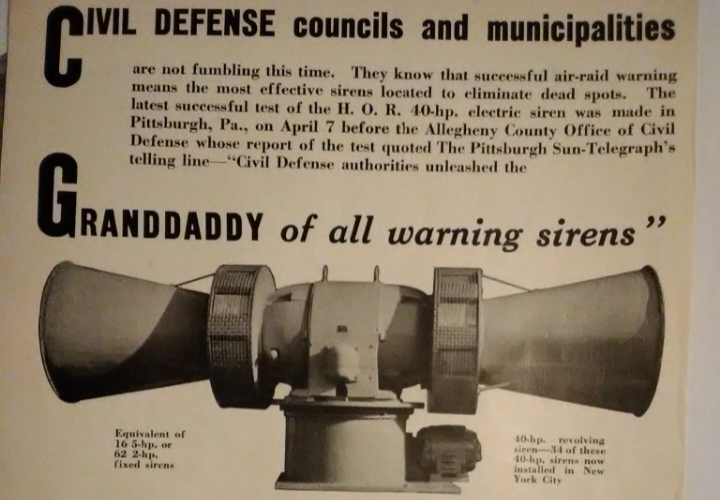

The electric siren was not invented to warn of air raids, but instead to warn volunteer firefighters that a fire call is in progress and to report to the station ASAP. Before the development of the electric siren between 1905-1910, fire departments relied on air horns, steam whistles, tires, or bells. These all had their own major drawbacks: Horns and whistles rely on an external source of air/steam that must be recharged periodically, and a leak can lower the volume or outright silence it if it goes unnoticed. Fire bells, on the other hand, could easily be confused with church bells. Clearly a better solution was needed.
The electric siren was first developed by a man named William A. Box, and his “Denver” electric sirens quickly became popular and replaced the aforementioned warning devices. The siren’s ability to start reliably and rapidly at the push of a button proved valuable and saved precious time, and it costed only a few cents to run in terms of electricity costs. The sound of the siren was distinct, could not be mistaken for anything else, and could be heard even in neighbouring towns. By the mid-1910s and early 1920s, there was already a huge booming market for fire sirens. Companies like the Federal Electric Company (still around as Federal Signal Corp), Sterling Siren Fire Alarm Co (now Sentry Siren Inc.) and Decot Machine Works all competed fiercely to outdo one another.
While far less common nowadays thanks to pagers taking over this role, fire sirens are still fairly common in the U.S., especially on the East Coast. In fact, several 100 year old sirens are still in service today because they’re just that well-built and reliable!
Here’s a video of a roughly 100 year old Denver siren, still operational.



Nah. Switching to CachyOS instead.